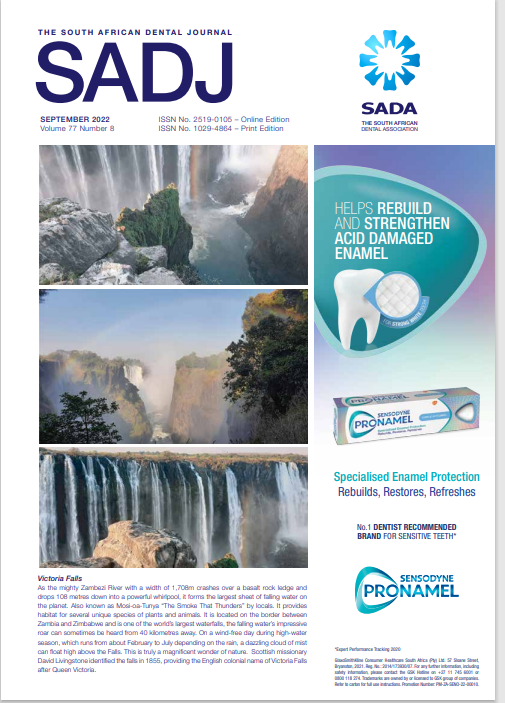The Complexity of Dental Enamel
Keywords:
amelogenesis, susceptible, tetracyclineAbstract
Dental enamel constitutes the least quantitative and rarest component of all tissues in the human body but is the most enduring and hardest constituent of ecto dermal cellular development. Dental enamel can be a harbinger of history, reflecting the environment during the time it was being formed. Enamel first appeared around 415 million years ago when the suite of genes that encode the proteins required to make enamel appeared in the scales of sarcopterygians.1 The vitreous nature of enamel provides its white lucent,
iridescent and gleaming appearance as a physically attractive feature of a human smile, but contrarily, it may provide a snarling repulsive warning of a sneer
Downloads
References
Ungar, P. Evolution’s Bite: A story of Teeth, Diet and Human Origins. Https://.review.oaacademic press.com/92368. (2017).
Kelly A.M. et al Measuring Microscopic structure of Human Dental Enamel. Preprints 2020.
Skinner et al. Enamel thickness trends in PlioPleistocene hominin mandibular molars.J. Hum Evol 85:35-45. (2015).
Kono et al. G. blacki was adapted to consuming tough fibrous food. Quart Intenat.354:46-51. (2014).
Wang W. J. Hum Evol 57: 229-240 (2009).
Leluyer M, Rottiers S, Comparative patterns of enamel thickness topography and oblique molar wear in two Early Neolithic and Medieval population samples. Am. J. Phys. Anthrop. 155:162-172. (2014).
Beniash et al. J. Struct Biol. 166:133-143 (2009).
Elsharkaway S. Al-Jawad M et al. Protein disorder/order interplay to guide the growth of hierarchical mineralized structures. Nature Comm. (1) doi:10.1038/s1467-018-04319-0 (2018).
Vennila V, Madhu V. et al. Tetracycline-induced discoloration of deciduous te
Downloads
Published
Issue
Section
License

This work is licensed under a Creative Commons Attribution-NonCommercial 4.0 International License.





.png)